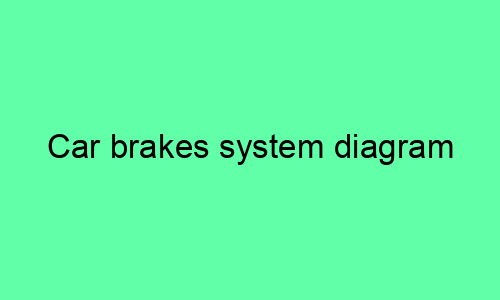Car Brakes System Diagram
Introduction
The brakes are one of the most important safety features on your car. They allow you to slow down and stop your car safely and effectively. The brakes system is a complex one, but it can be understood with a basic diagram.
Diagram
The following diagram shows the basic components of a car brakes system:

Components
- Brake pedal: This is the pedal that you press to apply the brakes.
- Master cylinder: This is the cylinder that converts the force you apply to the brake pedal into hydraulic pressure.
- Brake lines: These are the lines that carry the hydraulic pressure from the master cylinder to the brake calipers.
- Brake calipers: These are the devices that squeeze the brake pads against the brake rotors to slow down or stop the car.
- Brake pads: These are the pads that make contact with the brake rotors and create friction to slow down or stop the car.
- Brake rotors: These are the discs that the brake pads squeeze against to create friction.
How the Brakes Work
When you press the brake pedal, the master cylinder converts the force you apply into hydraulic pressure. This pressure is then sent through the brake lines to the brake calipers. The brake calipers squeeze the brake pads against the brake rotors, which creates friction and slows down or stops the car.
Maintenance
The brakes are a critical safety feature, so it is important to keep them in good working condition. You should have your brakes inspected regularly by a qualified mechanic. The mechanic will check the brake pads, rotors, and other components for wear and tear. They will also make sure that the brake fluid is at the correct level and that there are no leaks in the system.
Conclusion
The brakes are one of the most important safety features on your car. By understanding how the brakes work and how to maintain them, you can help keep your car safe and reliable.






